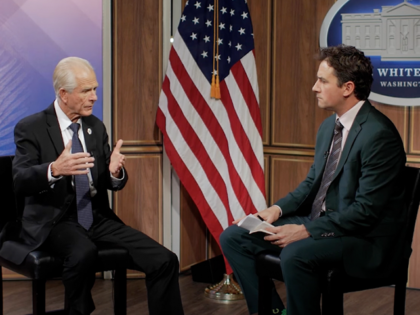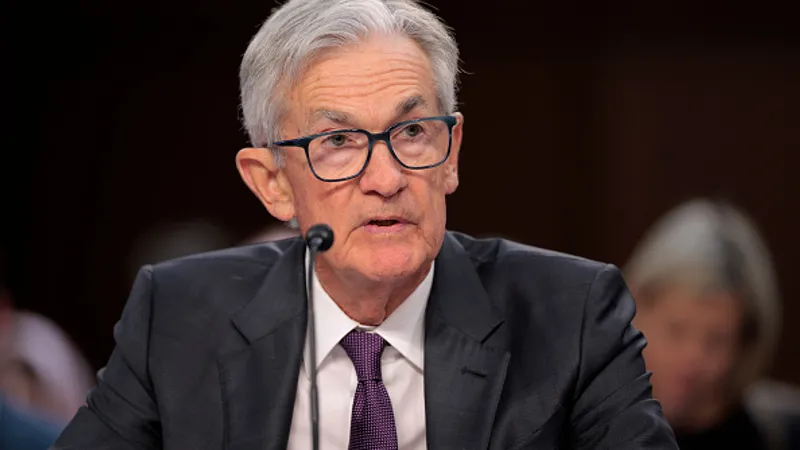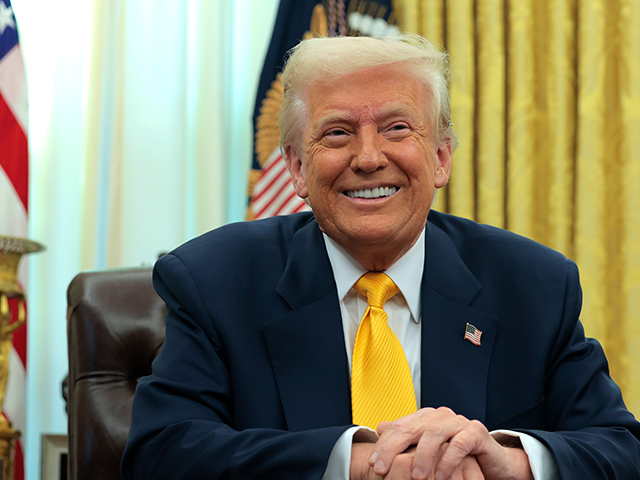from Business Today
This is Wild…
from King World News
 As we near the end of the first quarter of 2025, this is wild…
As we near the end of the first quarter of 2025, this is wild…
This Is Wild And It Will Impact The US Dollar
March 20 (King World News) – Peter Boockvar: I’ve argued over the past few months that the Mag 7 stocks became a reserve currency holding for foreign holders, including some central banks like the Norges Bank and the Swiss National Bank. My friend Torsten Slok posted this chart yesterday highlighting the extent to which foreigners own US stocks. I reiterate my belief expressed last month that the dominance of the AI tech/Mag 7 trade is over and also has possibly repercussions for the US dollar as foreign money finds opportunities elsewhere. Also, if the administration is successful in reducing the US trade deficit (whether a laudable goal or not), foreigners will have less money to reinvest in the US as they accumulate less dollars.
Trump’s In, and Suddenly Jerome Powell is Concerned About Inflation
by Jack Hellner
American Thinker
 Jerome Powell says Trump’s trade policies will cause inflation but does not explain why the tariffs in his first term didn’t. Why doesn’t Powell say how fewer regulations and lower energy prices will lower inflation? Why doesn’t he commend Trump for his great efforts to reduce waste, fraud, and abuse since a reduction in federal spending will reduce inflation? Why doesn’t Powell recognize that closed borders will lower inflation?
Jerome Powell says Trump’s trade policies will cause inflation but does not explain why the tariffs in his first term didn’t. Why doesn’t Powell say how fewer regulations and lower energy prices will lower inflation? Why doesn’t he commend Trump for his great efforts to reduce waste, fraud, and abuse since a reduction in federal spending will reduce inflation? Why doesn’t Powell recognize that closed borders will lower inflation?
Here are things that he didn’t say anything about during Biden’s four years, when inflation shot up to over 9%. He didn’t blame Biden’s policies. Nope — he just said they were transitory.
Only a person with no expertise would have missed that these things would lead to inflation.
Federal Reserve Monetary Malfeasance Has Consequences
by Mike Maharrey
GoldSeek
 Nothing is forever.
Nothing is forever.
Not even Forever.
Forever 21 recently filed for bankruptcy – again. The clothier reorganized back in 2019. Now it is shutting down for good. According to recent reporting, the company plans to close all 354 stores in what the company calls “an orderly wind down” of its operations.
[…] This is yet another hiccup revealing that the undercarriage of the U.S. economy is rickety.
Forever 21 isn’t drowning alone. Corporate bankruptcies reached a 14-year high last year. Party City, Kohl’s, JCPenney, and Joann Fabrics are among the retailers filing bankruptcies in recent months.
Peter Navarro Explains Trump’s ‘3D War On Inflation’
by John Carney
Breitbart.com
 Navarro: Trump Is Fixing the Real Drivers of Inflation
Navarro: Trump Is Fixing the Real Drivers of Inflation
Peter Navarro didn’t mince words when it came to the battle against inflation. In an exclusive interview at the White House with The Alex Marlow Show podcast, hosted by Breitbart Business Digest co-author Alex Marlow, Trump’s senior trade and economic adviser laid out exactly how the administration is thinking about inflation and why the media is getting it all wrong.
Navarro describes inflation as an economic war that the administration is fighting on three critical fronts, a strategy he calls “Trump’s 3D War on Inflation.”
“This is a three-dimensional battle,” Navarro explained. “We’re going after inflation with deregulation, domestic energy, and defunding Biden’s overspending. That’s how we win.”
Powell – The Fed – Inflation – Recession
by Martin Armstrong
Armstrong Economics
 Jerome Powell kept rates unchanged as our computer was projecting. However, he did weigh in on the state of the US economy, pointing out that Donald Trump’s policies were one reason why inflation is turning back up. He also reduced the Fed’s 2025 growth projection, noting that uncertainty around the slowing economy is increasing. The Fed is well aware of the Economic Confidence Model. Both Canada and the Fed started to lower rates when the ECM was turned down last May.
Jerome Powell kept rates unchanged as our computer was projecting. However, he did weigh in on the state of the US economy, pointing out that Donald Trump’s policies were one reason why inflation is turning back up. He also reduced the Fed’s 2025 growth projection, noting that uncertainty around the slowing economy is increasing. The Fed is well aware of the Economic Confidence Model. Both Canada and the Fed started to lower rates when the ECM was turned down last May.
[…] Powell said, “Inflation has started to move up,” adding that “there may be a delay in further progress over the course of this year.” The confusion people have is that, as I have pointed out before, government employees are counted TWICE in GDP. First as total government spending and second as total personal income. So, firing government employees will have a large,r more exaggerated impact on GDP going forward.
Fed Holds Main Rate Steady, Forecasts Higher Inflation, Slower Growth
“Growth looks like it’s maybe moderating a bit, consumer spending moderating a bit, but still at a solid pace,” Fed Chair Jerome Powell said during a press conference.
by Jim Tyson
CFO Dive
 Since Fed officials last met in January, consumer surveys and economic data have flashed warning signs of rising inflation risks and slowing growth.
Since Fed officials last met in January, consumer surveys and economic data have flashed warning signs of rising inflation risks and slowing growth.
Consumer spending shrunk 0.5% in January and retail sales last month rose a lower-than-expected 0.2%.
Consumer sentiment has slumped in recent weeks and expectations for higher price pressures have increased, according to surveys by the Conference Board and University of Michigan.
The dual risk of weakening growth with rising inflation — or “stagflation” — stems primarily from policy shifts by the Trump administration, including higher tariffs, widespread layoffs of federal employees and plans for mass deportations, according to economists.
‘Transitory’ is Back as the Fed Doesn’t Expect Tariffs to Have Long-Lasting Inflation Impacts
Economic projections the Fed released Wednesday indicate that while officials see inflation moving up this year more rapidly than previously expected, they also expect the trend to be short-lived.
by Jeff Cox
CNBC.com
 The “good ship Transitory,” despite an ominous record, appears ready to sail again for the Federal Reserve.
The “good ship Transitory,” despite an ominous record, appears ready to sail again for the Federal Reserve.
Economic projections the central bank released Wednesday indicate that while officials see inflation moving up this year more rapidly than previously expected, they also expect the trend to be short-lived. The outlook spurred talk again about “transitory” inflation that caused a major policy headache for the Fed.
At his post-meeting news conference, Chair Jerome Powell said the current outlook is that any price jumps from tariffs likely will be short-lived.
Asked if the Fed is “back at transitory again,” the central bank leader responded, “So I think that’s kind of the base case. But as I said, we really can’t know that. We’re going to have to see how things actually work out.”
Fed Sticks to Wait-and-See, Sees Only 2 Cuts in 2025, “Dot Plot” Shifts Hawkish Amid Rising Inflation & “Uncertainties.” Slows Treasury QT, Maintains MBS QT
by Wolf Richter
Wolf Street
 “Dot plot”: 8 of 19 participants see either no cut or just 1 cut in 2025.
“Dot plot”: 8 of 19 participants see either no cut or just 1 cut in 2025.
The FOMC voted today to keep the Fed’s five policy rates unchanged, for the second meeting in a row, after cutting by 100 basis points in 2024. All participants agreed with the rate decision. But Christopher Waller dissented because he preferred to continue the current pace of QT.
U.S. Stocks and Bonds Were Underpinned Post-FOMC After the Fed Kept Rates Unchanged and Slowed the Pace of QT – Newsquawk Asia-Pac Market Open
from Zero Hedge

Trump’s Producer Economy is Winning the Fight Against Inflation
by John Carney
Breitbart.com
 Trump’s Producer Economy Can Bring Down Inflation
Trump’s Producer Economy Can Bring Down Inflation
The economic story of 2025 is becoming increasingly difficult to ignore. America’s production engine is roaring back to life.
February’s economic data provided a striking contrast to the narrative of stagnation and uncertainty that has dominated discussions of the U.S. economy in recent weeks. While consumer spending and business sentiment have shown signs of caution, the industrial and housing sectors tell a different story—one of expansion, renewed confidence, and a steady ramp-up of supply-side economic activity.
Industrial production surged 0.7 percent in February, blowing past expectations for a 0.2 percent gain. The increase pushed total industrial output to an all-time high, surpassing its previous peak from Trump’s first term. Manufacturing output rose 0.9 percent, the strongest
